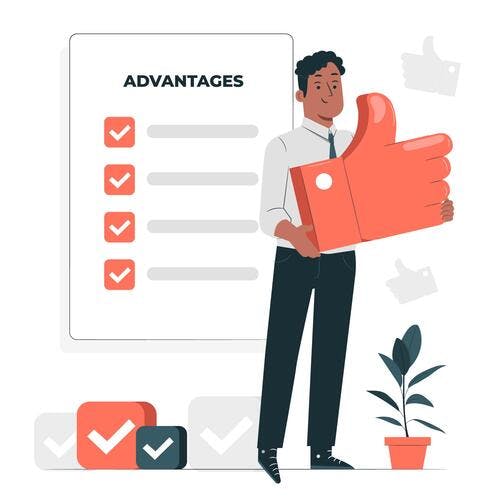Frameworks: What You Need To Know
So you are a tech newbie and you have no clue what frameworks are and why you need them, or your are just curious about technical concepts, read on!
Frameworks: What You Need To Know
 The backbone of many shopping websites, blogs, and web applications today, frameworks have made web development easier, faster, and more efficient for software engineers and internet users. If you have shopped on the internet, read that blog on Pinterest, or signed up for that free course on Udemy, you have used this technological innovation.
The backbone of many shopping websites, blogs, and web applications today, frameworks have made web development easier, faster, and more efficient for software engineers and internet users. If you have shopped on the internet, read that blog on Pinterest, or signed up for that free course on Udemy, you have used this technological innovation.
What then is a framework, and why is it important to you—not just as a software engineer but as a web user? This article sheds light on the importance of frameworks to the internet today, what you need to know about how they operate, and why you should learn them as a developer.
What Is a Framework?
A framework is a software development tool that allows for creating, updating, and maintaining web applications, APIs, and blogs using pre-written and reusable code. As their name suggests, frameworks provide a standard structure for developers to build projects without worrying about the little functionalities.
Frameworks allow programmers the creative freedom to develop great technologies within the confines of specific patterns, ensuring minimal bugs, and programmers do not have to reinvent the wheel and build from scratch.
Frameworks are a collection of libraries referenced for the efficiency of development processes in software engineering. They could be referred to as a set of rules or blueprint for developing specific programs and how those programs will interact with other programs.
Types of Frameworks in Web Development
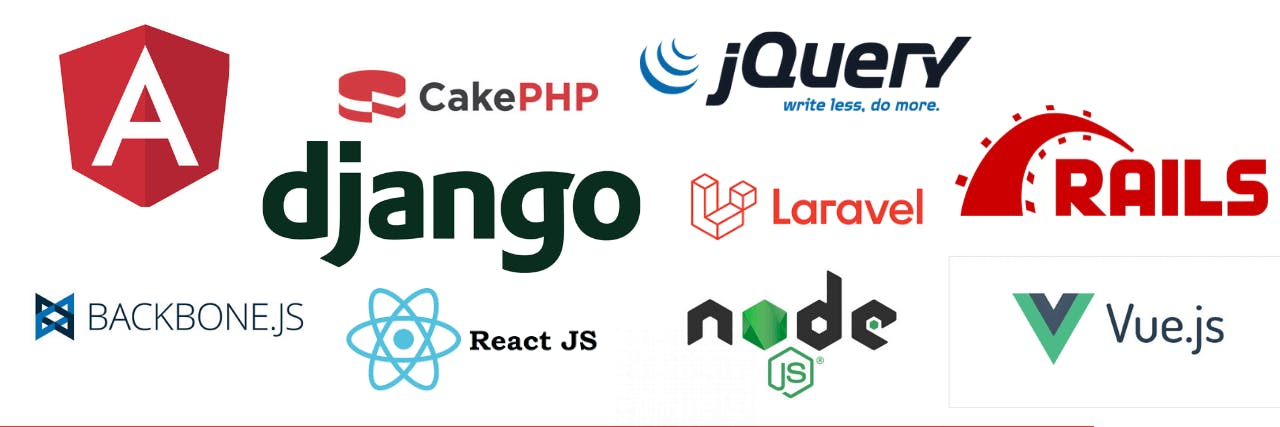 Frameworks are not constrained to just web development, as you will find them readily in use in app development and data science. Frameworks are used to develop client-side and server-side functionalities of a website, mobile app development, and large-scale data processing.
Frameworks are not constrained to just web development, as you will find them readily in use in app development and data science. Frameworks are used to develop client-side and server-side functionalities of a website, mobile app development, and large-scale data processing.
However, since this article is about how Frameworks are useful to the internet user, it will highlight the two main types of web frameworks: frontend and backend. Frameworks used in the development of web applications and APIs can be categorised broadly into frontend and backend.
Frontend Frameworks
Bootstrap
 Bootstrap is an open-source frontend framework that creates well pixelated and responsive web pages and applications. It offers ready-to-use HTML, CSS, and JavaScript templates that create cool styling for buttons, forms, rows, typography, drop-downs, and common features you will find on a webpage. It is easy to set up and master.
Bootstrap is an open-source frontend framework that creates well pixelated and responsive web pages and applications. It offers ready-to-use HTML, CSS, and JavaScript templates that create cool styling for buttons, forms, rows, typography, drop-downs, and common features you will find on a webpage. It is easy to set up and master.
Tailwind CSS
 Tailwind CSS is a CSS framework that uses lower-level utility classes; that is, it lets you specify different attributes of web features instead of just HTML elements. It is flexible compared to bootstrap and allows you to customize your layouts how you would like while ensuring that you do not have to reinvent the wheel.
Tailwind CSS is a CSS framework that uses lower-level utility classes; that is, it lets you specify different attributes of web features instead of just HTML elements. It is flexible compared to bootstrap and allows you to customize your layouts how you would like while ensuring that you do not have to reinvent the wheel.
VueJs
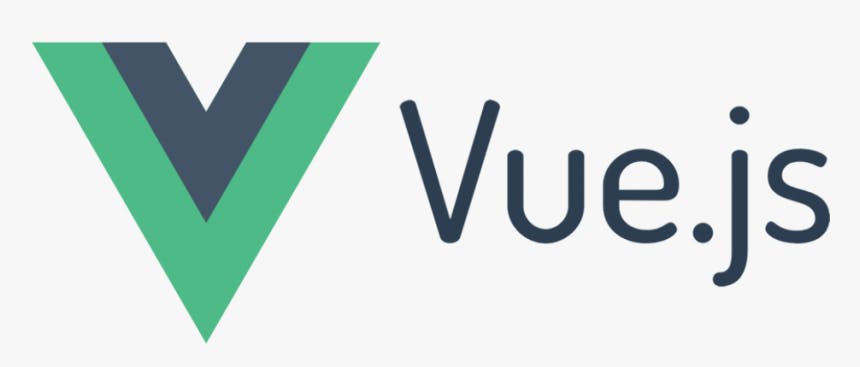 Vue is an open-source JavaScript framework for creating interactive user interfaces for web pages and applications. It makes web applications easy to maintain, allows for easy manipulation of web content, and enhances user interactivity with web applications. Companies like Facebook, Google, Nintendo, and Netflix use Vue JS for efficient software development.
Vue is an open-source JavaScript framework for creating interactive user interfaces for web pages and applications. It makes web applications easy to maintain, allows for easy manipulation of web content, and enhances user interactivity with web applications. Companies like Facebook, Google, Nintendo, and Netflix use Vue JS for efficient software development.
AngularJs
 Angular is a JavaScript framework created by Google. It is used to create single-page applications(SPA) and is very easy to learn. However, learning the framework will require basic HTML, CSS, and JavaScript knowledge. Some websites that use Angular are upwork.com and leetcode.com.
Angular is a JavaScript framework created by Google. It is used to create single-page applications(SPA) and is very easy to learn. However, learning the framework will require basic HTML, CSS, and JavaScript knowledge. Some websites that use Angular are upwork.com and leetcode.com.
Backend Frameworks
Django
 Django is a free-to-use high-end python framework that integrates the model-view-controller pattern to optimize the creation of web applications. It provides security and database features. It uses HTML templates that allow the input of HTML elements in web apps.
Django is a free-to-use high-end python framework that integrates the model-view-controller pattern to optimize the creation of web applications. It provides security and database features. It uses HTML templates that allow the input of HTML elements in web apps.
It is easy to learn, but knowledge of basic python is necessary. It is also quite easy to install. You can create anything from social media apps to simple blogs.
Laravel
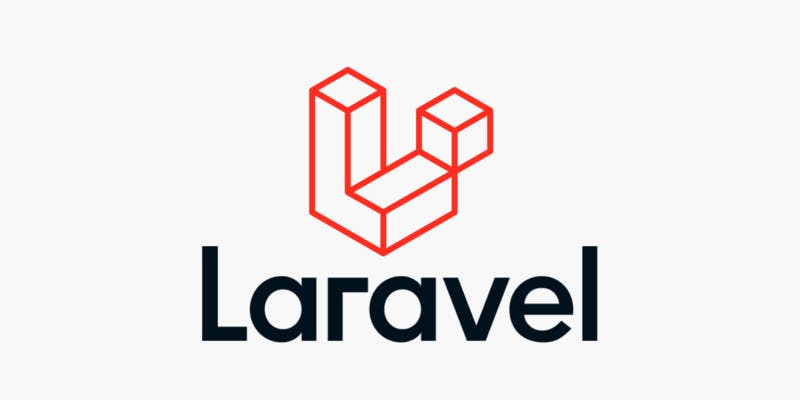 Laravel is an open-source framework built on the PHP programming language. As with most backend frameworks, it saves developers the pain of coding everything from scratch, and is centred on the model-view-controller pattern. It is best for creating e-commerce platforms, online stores and e-learning platforms.
Laravel is an open-source framework built on the PHP programming language. As with most backend frameworks, it saves developers the pain of coding everything from scratch, and is centred on the model-view-controller pattern. It is best for creating e-commerce platforms, online stores and e-learning platforms.
Express
 Express is an open-source framework coined from Node.js but is much less opinionated. It may be referred to as a minimalist Node.js. Express is used to create APIs, web applications, and mobile applications.
Express is an open-source framework coined from Node.js but is much less opinionated. It may be referred to as a minimalist Node.js. Express is used to create APIs, web applications, and mobile applications.
Ruby on rails
 Ruby on rails is a full-stack development framework built on the Ruby language used to create web applications. It is open-source and free to use. Ruby on rails also uses the Model-View-Controller pattern to create web apps. You can install it by going to the Rails website.
Ruby on rails is a full-stack development framework built on the Ruby language used to create web applications. It is open-source and free to use. Ruby on rails also uses the Model-View-Controller pattern to create web apps. You can install it by going to the Rails website.
Companies like Instagram, Spotify, Pinterest, and Shopify use these backend frameworks for their software development.
Advantages of Frameworks
Saves Time
As a developer, as important as creating top-notch web applications, APIs, and websites, it is also important to deploy these apps in the shortest amount of time—especially if you work in an organisation.
With frameworks, you do not have to code everything from scratch. Frameworks allow you to focus on the high-level part of your projects.
Say you were trying to build a car; it would be time-consuming if you had to produce the wheels, rims, doors, and everything before the car is functional. Frameworks provide a system where you only focus on more specific tasks like making the engines faster and more durable or ensuring the car consumes less gas.
Cleaner Code
As humans, even the best of us are limited and bound to make mistakes. Coding web applications from scratch is not just hard, and you will run into many bugs—things are bound to get messy.
However, since frameworks let you focus on more specific tasks, you are less likely to make and run into errors. Even when you run into bugs because there is usually a large community of people using the same framework, you will find help quickly.
Also, because frameworks act as a base, there is a defined structure, and your code is straight to the point.
Community Support/Documentation
The biggest advantage of working with frameworks is the amount of help from the communities and documentation. Frameworks usually have a guide that clearly states how to use them. If you forget how to code something, you could look up the documentation of whatever framework you use and find a solution.
Additionally, most frameworks are supported by organisations who consistently review these frameworks for bugs ensuring that developers can use this tool without running into errors at every turn.
Teams
Frameworks are best for working in teams or organisations as there is a defined pattern to building applications. They are usually easy to learn, ensuring your software development process uniformity.
Disadvantages of Frameworks
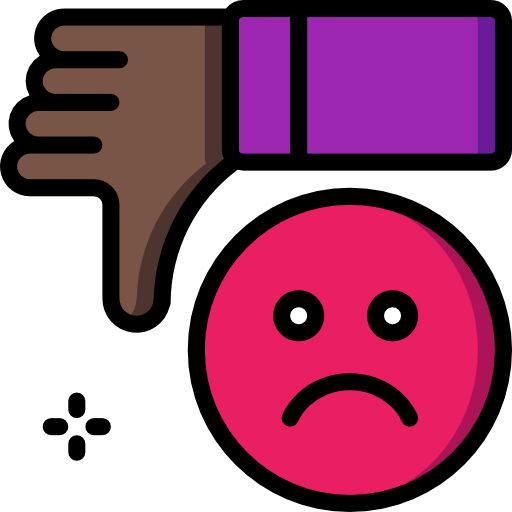 Dislike icons created by Smashicons - Flaticon
Dislike icons created by Smashicons - Flaticon
Rigidity: Too Opinionated
Some frameworks offer minimal flexibility. There is a defined sequence to how things should look, feel, and act. It is much too constrained. They do not allow creative freedom as web applications or websites with these frameworks often look homogenous.
As a developer, you want your projects to stand out, but this might not be possible with some frameworks. While the rigidity of some frameworks has its advantage, it is a disadvantage in some sense.
Overcomplexity
Using frameworks is just overkill for small projects because they create too many complexities. Say you were trying to build a simple blog; while you could use a framework to build one, it just seems unnecessary. Frameworks are best for scalable projects.
Updates
Some frontend frameworks are constantly updated, and these updates can become hard to keep up with. You constantly have to integrate these changes to your codes and may have to update your web applications which may cause other problems.
How Do I Choose a Framework?
Now that you know what frameworks are, their benefits, and some of the best frameworks for web development, you need to know how best to choose a framework to work with.
There are many different kinds and types of frameworks out there, and more are being written as you read. That can be overwhelming if you are trying to learn to use a framework.
When choosing a framework, your first approach would be to figure out what problems you are trying to solve and what frameworks will best solve them. It is also important to ask yourself if your problem is a client-side or server-side problem.
For example, to build pixelated, visually appealing, and user-interactive web applications, you may opt to use BootStrap, React, or Vue to implement these features. However, if you are building a scalable backend application, using backend frameworks like Django or Laravel will be your best pick.
